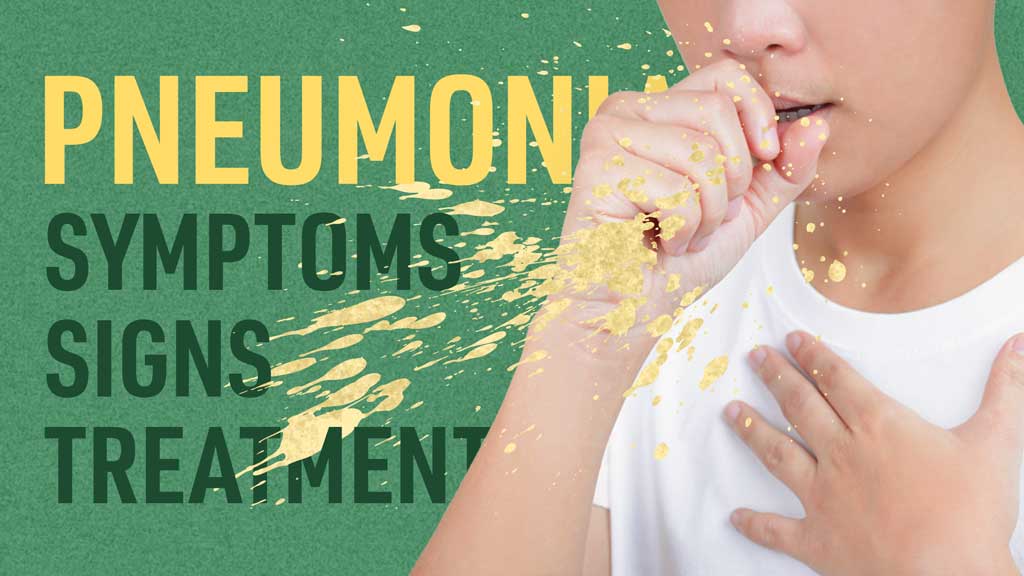In 2019, 2.5 million people died from pneumonia worldwide (Dadonaite & Roser 2019).
Respiratory illnesses, including pneumonia, remain a major concern for hospitals around the world, especially during the winter months when an influx of patients can put some hospitals into crisis mode.
Pneumonia ranges in severity from a mild illness to life-threatening. Anyone can contract pneumonia, but babies, young children, older adults and Aboriginal and Torres Strait Islander people are particularly susceptible to the dangers of this illness (Healthdirect 2023).
Pneumonia is a leading cause of death in children under the age of five, accounting for about 14% of deaths in this age group (WHO 2022).
There were 2,762 deaths caused by pneumonia and influenza in Australia in 2022, making them the 18th leading cause of death that year (ABS 2023).
What is Pneumonia?
Pneumonia is an acute infection of the lungs that causes the alveoli in one or both lungs to fill with pus and fluids. This results in lung consolidation (wherein the alveolar spaces are filled with fluid instead of air) and interferes with gas exchange (Better Health Channel 2018; The Healthline Editorial Team & Marcin 2023).
When a person has pneumonia, breathing is painful and oxygen intake is limited (WHO 2022).
Pneumonia doesn’t discriminate across the lifespan and can affect any age group, though it is more common in young children and older adults (Better Health Channel 2018). Depending on the severity, some people may not necessarily need to be hospitalised, whilst others will.
Generally, those with more comorbidities or any problem that may exacerbate pneumonia will require hospital admission. Pneumonia can also be treated in the community as long as the individual has access to good medical and nursing care.

Causes of Pneumonia
Pneumonia is caused by a viral, bacterial - or rarely - a fungal infection (Healthdirect 2020). In some cases, it is triggered by an existing cold or flu that enables pathogens to access the alveoli (Better Health Channel 2018).
Transmission commonly occurs by inhaling infected droplets in the air from a cough or sneeze of an infected person. It can also spread via blood (WHO 2019b).
Symptoms of Pneumonia
Symptoms may vary depending on age, the cause and severity of the infection, and any existing health problems (Better Health Channel 2018). Assessing the patient and gaining a comprehensive patient history is vital in diagnosis. Symptoms may include:
- Coughing (dry or productive)
- Fever
- Breathing difficulties
- Increased respiratory rate
- Fatigue or general malaise
- Little to no appetite
- Chest pain
- Abdominal pain
- Cyanosis.
(Healthdirect 2023; Better Health Channel 2018)
With correct treatment, a health improvement is usually observed within 7 to 10 days (Better Health Channel 2018).
Symptoms of Pneumonia in Children
- Lethargy
- Irritability
- Chest pain
- Abdominal pain
- High fever
- Coughing
- Difficulty breathing
- Increased respiratory rate
- Little to no appetite
- Vomiting.
(RCH 2018; Raising Children Network 2023)
Note: Young infants with pneumonia may appear unwell with a fever and rapid breathing but may not present with any other symptoms (Raising Children Network 2023).
How is Pneumonia Diagnosed?
- General examination
- Nose and throat swab
- Urine or sputum tests
- Chest X-rays
- Blood tests.
(Healthdirect 2023; Better Health Channel 2018)
Who is Most at Risk of Pneumonia?
The following people are more likely to contract pneumonia and experience more severe symptoms:
- Infants and young children
- People over the age of 65 years
- People who have undergone an organ transplant
- Aboriginal and Torres Strait Islander people, particularly those over the age of 50 or who live in remote communities
- People with a chronic disease such as diabetes, asthma or a respiratory condition
- People with a compromised immune system
- People with a damaged or surgically-removed spleen.
(Healthdirect 2023; Better Health Channel 2018)
Types of Pneumonia
Bacterial Pneumonia
- Presents with rust or green-coloured phlegm.
- Pneumococcal pneumonia is one of the most deadly forms of bacterial pneumonia. It is caused by the bacterium Streptococcus pneumoniae.
- Healthy people may carry Streptococcus pneumoniae in their nose and throat. It mostly does not cause illness, except in vulnerable groups.
(Lung Foundation Australia 2023; Better Health Channel 2018)
Viral Pneumonia
- Caused by several viruses (including influenza).
- Symptoms are flu-like.
- Responsible for roughly half of all pneumonia cases.
(Lung Foundation Australia 2023; Better Health Channel 2018)

Mycoplasma Pneumonia
- Caused by the bacterium Mycoplasma pneumoniae.
- Presents with white phlegm, vomiting and nausea.
- Pneumonia caused by mycoplasma organisms is often mild, but recovery may take longer.
(Lung Foundation Australia 2023; Better Health Channel 2018)
Fungal Pneumonia
- A less common type of pneumonia.
- Generally occurs in people with chronic health problems and/or vulnerable immune systems.
- Fungal pneumonia is caused by breathing in fungal spores.
(Lung Foundation Australia 2023; Watson & Swiner 2022)
There are other ways in which pneumonia may be classified or described:
- Depending on the part of the lung affected, e.g. bronchial pneumonia or lower lobe pneumonia
- Depending on whether the pneumonia is community-acquired or hospital-acquired
- Whether it is secondary to another condition, e.g. aspiration pneumonia
- Whether it is ventilator-associated pneumonia.
(AMBOSS 2023)
Pneumonia Complications
Prompt and effective treatment of pneumonia is essential in order to prevent complications from occurring. Possible complications include:
- Pleurisy
- Respiratory failure
- Sepsis
- Metastatic infection
- Empyema
- Lung abscess
- Multi-organ dysfunction
- Death.
(Jain et al. 2023)
How is Pneumonia Treated?
Treatment depends on the severity and type of pneumonia.
In mild cases of bacterial pneumonia, the patient may be able to take oral antibiotics (usually amoxicillin) in an outpatient setting. For more severe cases, they may require hospital admission and treatment with intravenous antibiotics (SA Health 2021).
Another important aspect of pneumonia treatment is oxygen therapy and maintaining adequate oxygen saturation levels. Typically, oxygen saturation levels should be above 92%, although this depends on the patient and their comorbidities (e.g. patients with chronic obstructive pulmonary disease may have a lower baseline) (SA Health 2021; Queensland Health 2023).
Other supportive care may include:
- Fluid balance monitoring - increased oral fluids or subcutaneous fluids may be required
- Administering analgesics to manage pleuritic chest pain
- Administering antipyretics to manage fever
- Assessing swallowing and changing fluid consistency where indicated
- Assessing neurological function
- Managing oral hygiene
- Managing gastro-oesophageal reflux by elevating the patient and sitting them upright during and after feeding
- Reviewing medications and adjusting as indicated.
(Queensland Health 2023)
Pneumonia Prevention

Immunisation is a proven strategy for reducing the likelihood of contracting pneumonia. The pneumococcal vaccine is free under the National Immunisation Program (NIP) Schedule for certain groups of people (Healthdirect 2023).
You should also advise patients to:
- Practice good hand hygiene to minimise the transmission of infection
- Quit smoking and avoid smoking areas
- Keep their immune system strong by maintaining a healthy diet, exercising and getting sufficient sleep.
(Lung Foundation Australia 2023; Mayo Clinic 2020)
Conclusion
Nurses contribute to all phases of an individual’s pneumonia journey and are vital in ensuring they receive the holistic care they need during this illness.
Test Your Knowledge
Question 1 of 3
Which one of the following is a common symptom of pneumonia?
Topics
References
- AMBOSS 2023, Pneumonia, AMBOSS, viewed 4 December 2023, https://www.amboss.com/us/knowledge/pneumonia/
- Australian Bureau of Statistics 2023, Causes of Death, Australia, Australian Government, viewed 4 December 2023, https://www.abs.gov.au/statistics/health/causes-death/causes-death-australia/2022#australia-s-leading-causes-of-death
- Better Health Channel 2018, Pneumonia, Victoria State Government, viewed 29 November 2023, https://www.betterhealth.vic.gov.au/health/conditionsandtreatments/pneumonia
- Dadonaite, B & Roser, M 2019, Pneumonia, Our World in Data, viewed 29 November 2023, https://ourworldindata.org/pneumonia
- Healthdirect 2023, Pneumonia, Australian Government, viewed 29 November 2023, https://www.healthdirect.gov.au/pneumonia
- Jain, V, Vashisht, R, Yilmaz, G & Bhardwaj, A 2023, ‘Pneumonia Pathology’, StatPearls, viewed 4 December 2023, https://www.ncbi.nlm.nih.gov/books/NBK526116/
- Lung Foundation Australia 2023, Pneumonia, Lung Foundation Australia, viewed 4 December 2023, https://lungfoundation.com.au/patients-carers/living-with-a-lung-disease/other-lung-conditions/pneumonia/
- Mayo Clinic 2020, Pneumonia, Mayo Clinic, viewed 4 December 2023, https://www.mayoclinic.org/diseases-conditions/pneumonia/symptoms-causes/syc-20354204
- The Healthline Editorial Team & Marcin, J 2023, ‘Lung Consolidation: What It Is and How It’s Treated’, Healthline, 24 April, viewed 29 November 2023, https://www.healthline.com/health/lung-consolidation
- Queensland Health 2023, Pneumonia, Queensland Government, viewed 4 December 2023, https://www.health.qld.gov.au/clinical-practice/guidelines-procedures/clinical-pathways/residential-aged-care-clinical-pathways/all-pathways/pneumonia
- Raising Children Network 2023, Pneumonia, Raising Children Network, viewed 4 December 2023, https://raisingchildren.net.au/guides/a-z-health-reference/pneumonia
- SA Health 2021, Community Acquired Pneumonia (Adults) Clinical Guideline, Government of South Australia, viewed 4 December 2023, https://www.sahealth.sa.gov.au/wps/wcm/connect/9da8d680432af0a6a631f68cd21c605e/CAP+Clinical+Guideline+%28Adults%29_v2_FINAL_Jan2021+%282%29.pdf?MOD=AJPERES&CACHEID=ROOTWORKSPACE-9da8d680432af0a6a631f68cd21c605e-nKLcqiH
- Watson, S & Swiner, CN 2022, Types of Pneumonia, WebMD, viewed 4 December 2023, https://www.webmd.com/lung/pneumonia-types
- World Health Organisation 2022, Pneuomina in Children, WHO, viewed 29 November 2023, https://www.who.int/news-room/fact-sheets/detail/pneumonia

